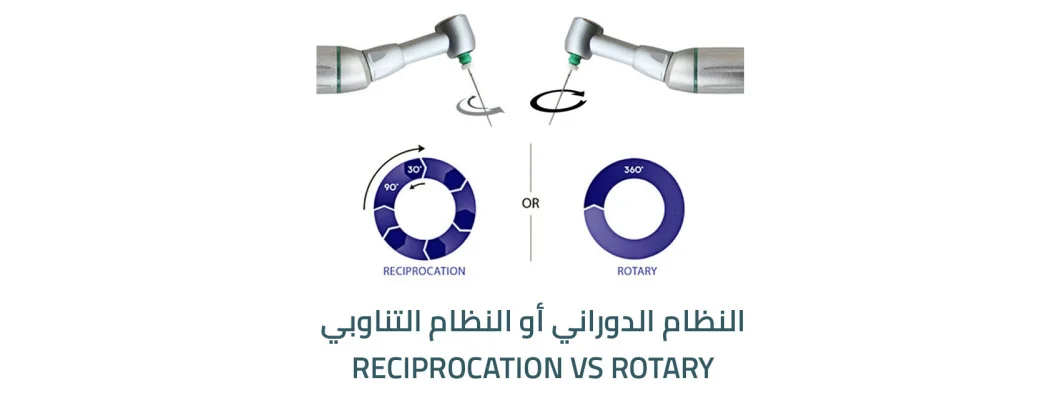ROTARY VS RECIPROCATION: How do I choose?

ROTARY VS RECIPROCATION: How do I choose?
03 Jan 2026
One of the most common questions an endodontist might get asked is “which is better for tooth canal preparation is it rotation or reciprocation?”
First, let us know what each movement is. Reciprocation is a motion in which an instrument is constantly engaging and disengaging in the root canal and it goes in a back-and-forth motion. Rotation on the other hand is a 360-degree continuous rotation of a rotary file in the root canal.
The general opinion in endodontics is that both of these motions should be done side by side in order to get the best preparation due to the difficulty in predicting which of them has better results.
The goal of this article is to explore and explain the major differences between Rotary and Reciprocation so that the clinician is aware of these differences.
Abstract
One of the key differences between rotation and reciprocation is the technique used to prepare the tooth canal. In rotation it is an “inside out” technique, where the shapers work as a brush and remove the dentin laterally. On the other hand, reciprocation has always used a “crown down” technique where the files shape the canal in descending order.
When it comes to the sequence we find that both techniques have a specific color sequence. In rotation, after the glide path is validated, we follow a five-color chain of (purple, white, yellow, red, and blue). In reciprocation, after the glide path is validated, the sequence is unmistakable and requires only a red file that is used in a multipass sequence.
By comparing the motions of the two techniques we find that rotation depends on a “brush” concept in using the shapers and finishers as we mentioned earlier, but it has a specific order where we use the shapers first in a “brush and follow” motion to reach the desired length. Then we start with the finishers in a “follow and brush” concept to connect the dots and accomplish a smooth canal preparation. In contrast, the reciprocation technique uses a single file in a “crown down” process; therefore the possibility of blocking the canal with dentin debris is higher and requires a consistent cleaning of the file and irrigation of the canal.
Results
At last, we must say that choosing between one of these two methods in root canal preparation is not an easy task to do from an endodontic perspective and the long-term success of the treatments based on these two methods are very similar. That is why we advise involving both techniques in endodontic procedures to get the best results possible.
